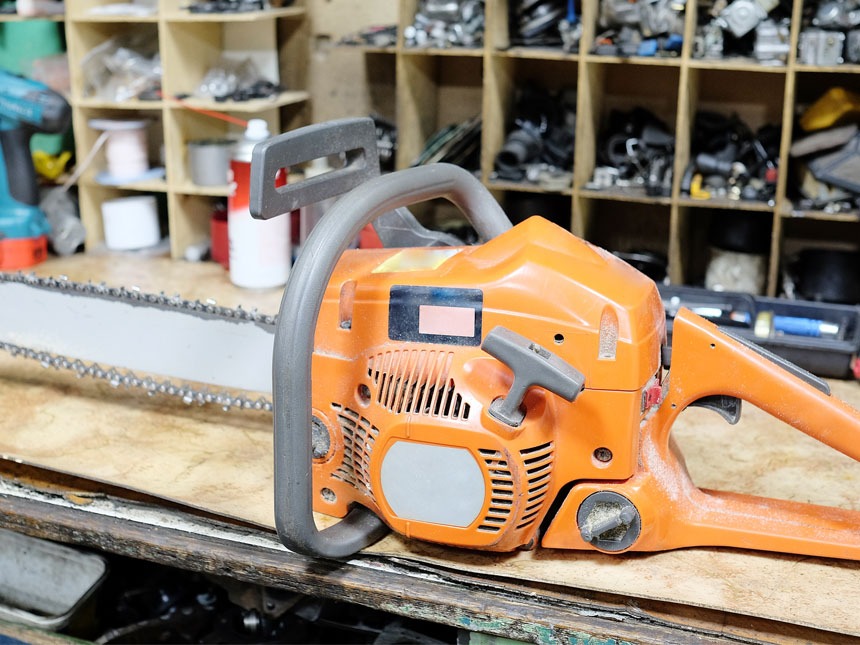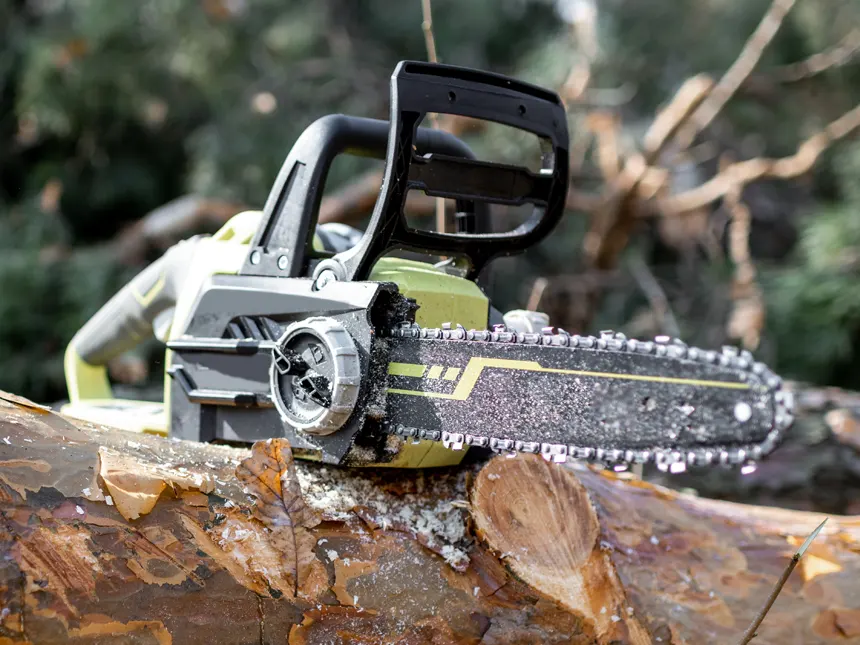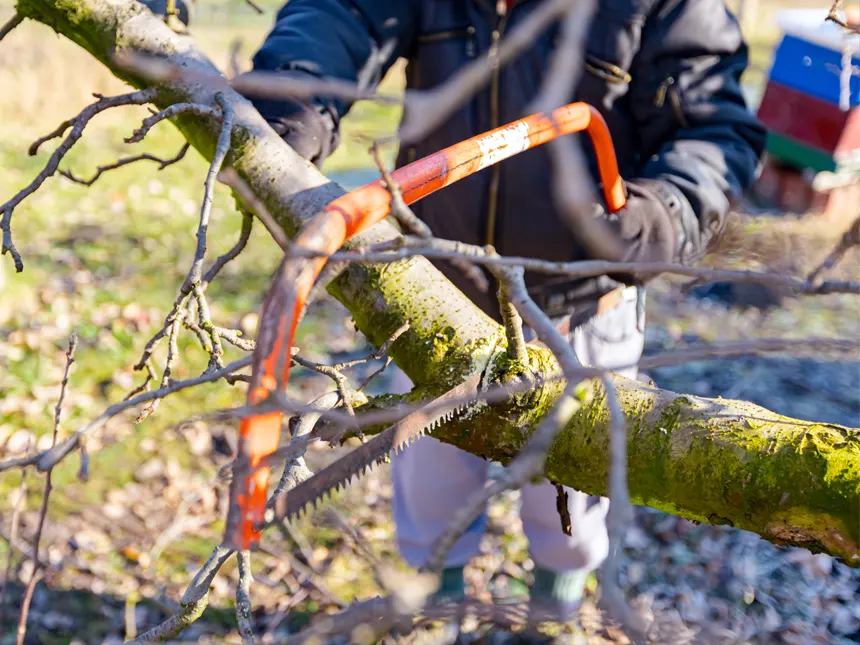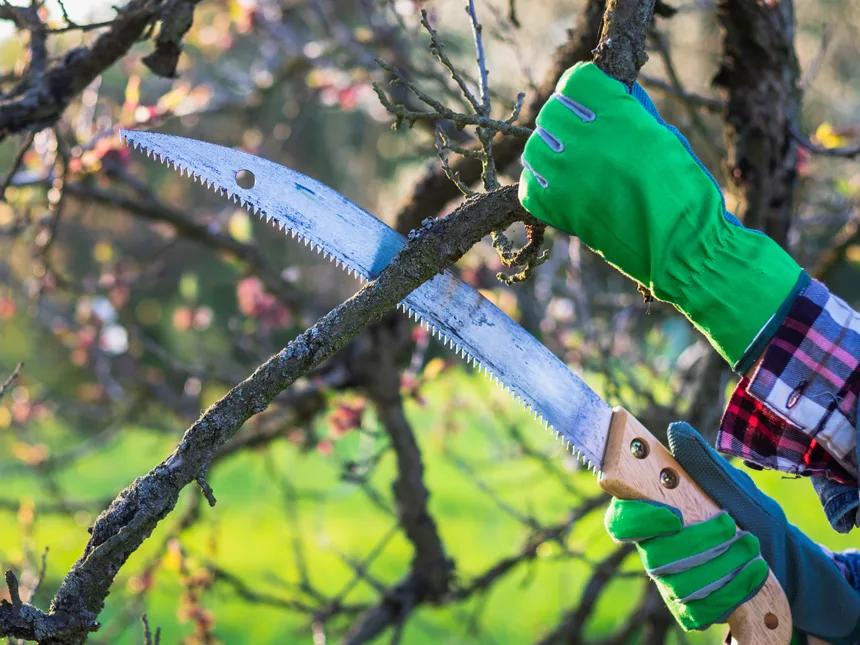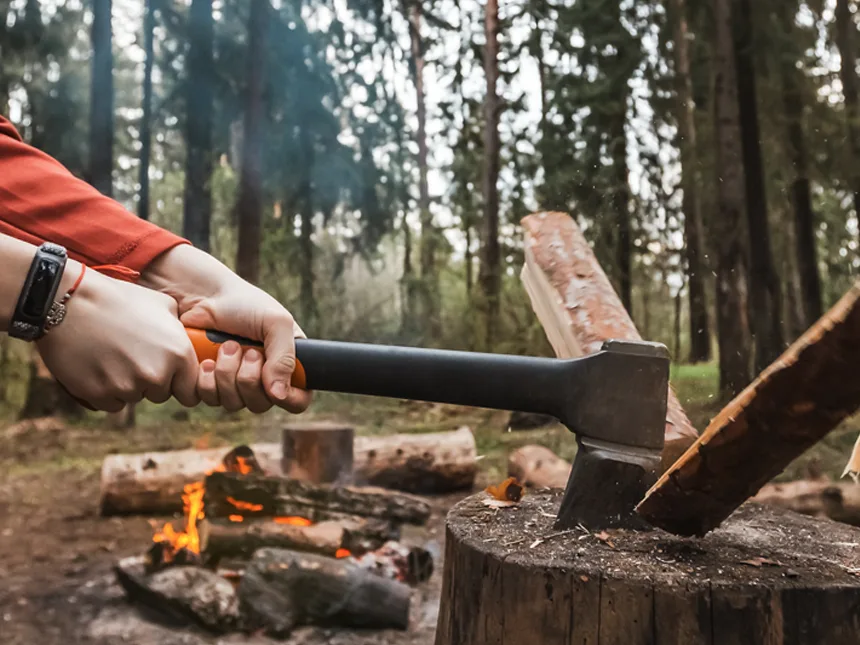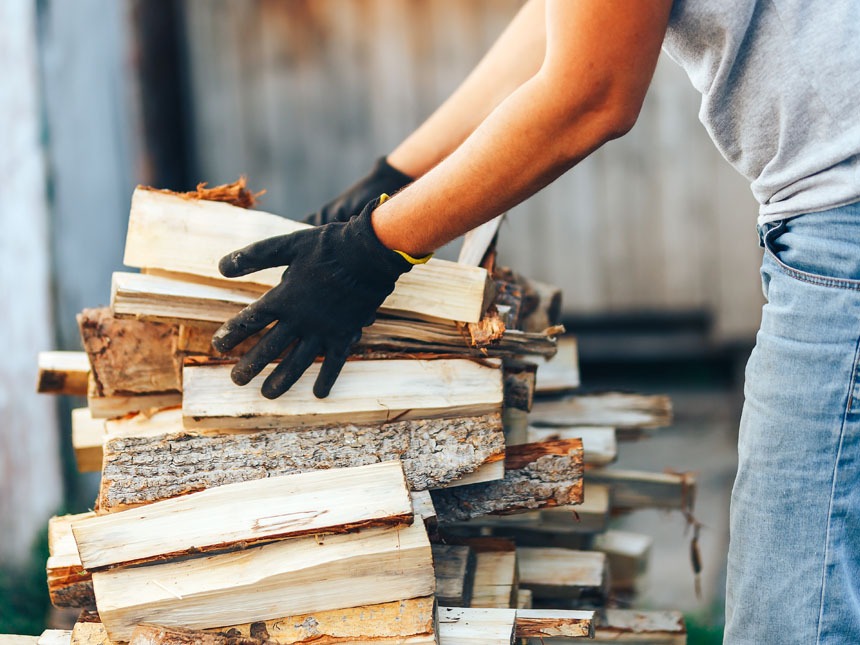Poplar Firewood: Is It Any Good?

Timber Gadgets is reader-supported. We may earn a commission if you buy through the links on our site.
Poplar is poor firewood and has borderline characteristics with softwood. Like most firewood, it burns fine when fully seasoned, but you may get tired of adding fuel repeatedly. It is commonly referred to as ‘go-fer’ firewood because it burns fast, and you go for more firewood on the stove.
With its bark off the wood, it seasons in a few months, but with unpeeled bark, it takes considerably longer.
Here, we have summarized a few facts regarding this hardwood:
- Poplar belongs to the genus populus, which has 35 species. Genus Populus has three groups, namely, aspens, cottonwoods, and balsam poplars. Its name ‘Populus’ comes from the fact that it was commonly planted around public gathering places during Roman times.
- It is a deciduous tree that sheds its leaves in fall. It is a hardwood, even though its characteristics relate more to softwoods like pine. Any tree being hardwood or softwood depends on whether it is deciduous or evergreen. All the evergreen trees are classed as softwood and deciduous as hardwood. It grows fast and is used as a privacy screen or windbreak.
- Often planted for ornamental purposes.
- It grows from 50 to 165 ft. tall, and the trunk can be up to 8 ft. wide. Its wood makes boxes, snowboards, boats, and matches. It has a wide root system that may reach up to 40 meters from the tree and can damage buildings and other structures with its invasive roots.
Table of Contents
Burn Qualities of Poplar Firewood
Poplar has a burn time ideal for campfires. It will burn for 2 to 4 hours and leave a little coal with considerable ash behind. It produces a burst of heat which lives for a short time. Poplar burns like softwood. The closest match is pine which finds the best use as kindling firewood.
It is widely used in making match sticks and universal kindling duty. Moreover, it’s best for the shoulder season when the temperature is not too low, and you want to save your denser hardwood for colder months.
It burns fast and releases a lot of heat in a very short burnout. Per cord (volume), the heat output of poplar is very low compared to others.
Some hardwoods produce two times more heat for the same volume. It’s nothing to turn away for free, mind you. After all, the best firewood is free, easily available, and in great quantity.
It may produce a stinky smell when burnt wet, but if the wood is fully dry, it doesn’t give any bad smell. Wet wood creates a lot of smoke and pops out as well, but if firewood is dry, it produces an average amount of each.
- BTU: 13.7 per Cord (Million BTUs)
- Dry Weight: 2080 lbs. per Cord
- Splitting Difficulty: Low
- Seasoning Time: 6-12 months
- Sap Content: Low
- Smoke: Moderate
Heat Output
Poplar has very low heat output and produces 13.7 million BTUs from one cord of fully seasoned firewood.
BTU stands for ‘British thermal unit’ and is used to measure the thermal production of different instruments. It is the same which is printed on your AC to show its heating/cooling capacity. 1 BTU is the amount of heat exchanged to change the temperature of one pound of water by one degree Fahrenheit.
One cord is the conventional unit to measure the volume of firewood for commercial purposes. It is measured as a wood stack of 4 x 4 x 8 cubic foot size. Sometimes smaller volumes are sold as a face cord or rick.
Now, even though poplar burns hot, it burns for almost half the time of dense hardwood, like oak. So total heat production by the same volume is almost half as compared to longer burning hardwoods.
Oak has a BTU heat output of 24.6 – 29.1 as compared to 13.7 by the poplar. Although it is a hardwood, and these are known for their long fires and high heat output, poplar shares greater similarities with softwoods.
Smoke
Poplar gives off smoke in moderate amounts if it is seasoned properly. If the firewood is not seasoned and has a moisture content above 20 percent, it produces more smoke and smells bad.
Creosote
Creosote is the condensed material from the smoke, which is the aggregation of unburnt particles from the firewood. The quantity of creosote is considerably higher for softwood like pine, with a higher sap and resin content. Higher creosote can block your chimney and can cause chimney fires because it is highly flammable.
Poplar produces an average amount of creosote. Unseasoned firewood creates higher amounts of it and can create a fire hazard. Irrespective of the firewood you are burning in your stove, you should get your chimney cleaned once a year. This should let you safely through the season.
Spark
Poplar is known to throw sparks. Dry firewood may produce less, but I recommend a screen in front of your stove to avoid any fire hazards.
Coals
Poplar is known to produce low-quality coals. Coaling is a major characteristic ranking any firewood. Poplar burns fast, and so do its coals.
Most hardwoods produce good coals. Unfortunately, poplar doesn’t. Its coals burn out fast, leaving good ash behind. For this reason, you can’t rely on poplar to provide night-long warmth, and it is more suitable for pit fires and shoulder seasons.
Sap
Poplar has low sap and is not difficult to work with, as is pine, which clogs equipment and spoils clothes. The sap is the lowest on winter days, so it is better to cut the plant in winter or early spring.
Low sap also makes the tree split with less effort. Plants with low sap dry faster and create less smoke and creosote.
Splitting Poplar for Firewood
Poplar splits like softwood, and it is very easy to work with. It doesn’t require much effort, and with a single or a few swings, the log splits into pieces.
Keep medium to large-sized pieces to extend the burn time. Kindling pieces can be smaller sized as poplar serves better as kindling or starter firewood with dense hardwood.
Related:
Comparing Poplar to Other Firewood
- Poplar is a low-density hardwood that provides a short burn time. Compared to other hardwood, its heat output is low.
- It serves better as a starter or can be mixed with denser firewood.
- It’s abundantly available due to its faster growth rate. So, it’s often used despite its poor performance.
- Has low sap content.
- Easy to split, fast to dry, and abundant availability make it usable on the stove.
- It finds most fit in mild seasons when a lot of heat is not required and your premium firewood is saved for colder months.
Here we have compared the heat output of different commonly used firewood species for your understanding. You can click on the firewood to know its detailed attributes.
| Species | Weight (lbs./Cord) Dry | Heat per Cord (Million BTUs) |
|---|---|---|
| Pecan | 4500 | 28.5 |
| Hickory | 4072 | 28.5 |
| Beech | 3760 | 27.5 |
| Walnut, Black | 3192 | 22.2 |
| Sweetgum | 2592 | 21.3 |
| Cherry | 2928 | 20.4 |
| Elm, American | 2872 | 20.0 |
| Boxelder | 2632 | 18.3 |
| Pine, Ponderosa | 2336 | 16.2 |
| Pine, White | 2250 | 15.9 |
| Poplar | 2080 | 13.7 |
| Redcedar, Eastern | 2060 | 13.0 |
How Long to Season Poplar?
FYI, seasoning means reducing the moisture of the wood below 20 percent. The firewood performs best between 13 to 17 percent.
Anywhere below 12 percent, firewood will burn too fast. Above 20 percent doesn’t burn well and releases a lot of smoke with less heat output.
Related: The Best Felling Axes
A positive thing about poplar is that it seasons fast. Under ideal conditions, it may take only 3 to 4 months to fully season poplar firewood. But it’s best to wait 6 to 12 months to ensure complete seasoning.
After felling a tree with green leaves, it should be left there until the leaves dry to a crisp. They will remove a lot of the moisture from the tree. Afterward, split the wood and stack it.
Stacking firewood away from buildings or hedges reduces the time required for seasoning. Wood stacks should be raised from the ground at least a couple of inches to avoid the moisture from the ground which may start to decay.
Identifying Poplar Trees
Here are a few characteristics to help you identify these trees:
- Poplar belongs to the genus Populus which produces large trees. White poplar is the most common and has green twinkling leaves and white bark. Black poplar and balsam poplar are other common types.
- It’s a deciduous tree that grows fast and reaches a height between 20 to 165 ft tall, depending upon variety. It grows in USDA zones 3 through 9. For their columnar growth, they are planted as hedges and serve privacy purposes as well.
- Poplar grows for about 50 years and takes 12 years before the tree reaches maturity. Aspen and cottonwood trees are other common trees belonging to the same genus. Shallow roots of poplar can damage buildings and property so they should be planted at a distance of 20 to 30 ft.
Leaves
Poplar leaves have silvery-white color in white poplar, whereas green and darker in other types. Leaves have a round base and pointy ends. They’re arranged alternately on the branches and have a heart-like or triangular shape with varying sizes.
Bark
Poplar has white to silver-gray bark, smooth in texture which gets fissured as they mature. Lenticels appear as horizontal scores on the stem.
Types of Poplar
Although it is a large group, here are a few common varieties.
- White Poplar – grows between 50 to 100 ft tall and has a broad canopy. These grow in full sun through USDA zones 3 to 8. Its leaves have a dark green upper surface and white lower surface which is lobed like maple leaves. Bark has a gray-green color with a thi, smooth appearance. It has thin horizontal lines around the stem and diamond-like fissures which makes it easily identifiable.
- Balsam Poplar – grows in USDA zones 2 to 7. It reaches a height of 80 to 130 ft. and gets its name from the thick, smelly substance from its buds. These have dark green ovate and narrow leaves with finely serrated margins. The bark is smooth gray which changes into dark, scaly, and fissured as they mature.
- Lombardy Poplar – a tal, slender tree that grows from 40 to 50 ft tall. It finds its best use as a privacy hedge. Lombardy poplar have triangular leaves and usually the green color changes into an attractive golden-yellow in the fall. It has dark, gray-green textured bark which turns black and fissured as it matures.
- Black Poplar – Growing between 65 to 100 ft, these have a dark, rough bark. Leaves are triangular and have long tips with finely serrated margins. Its leaves are green and turn yellow in fall. The bark is furrowed and has a rough texture.
Poplar isn’t what I consider good firewood. Having said that, it works just fine for the shoulder seasons and you can find it useful for kindling.

